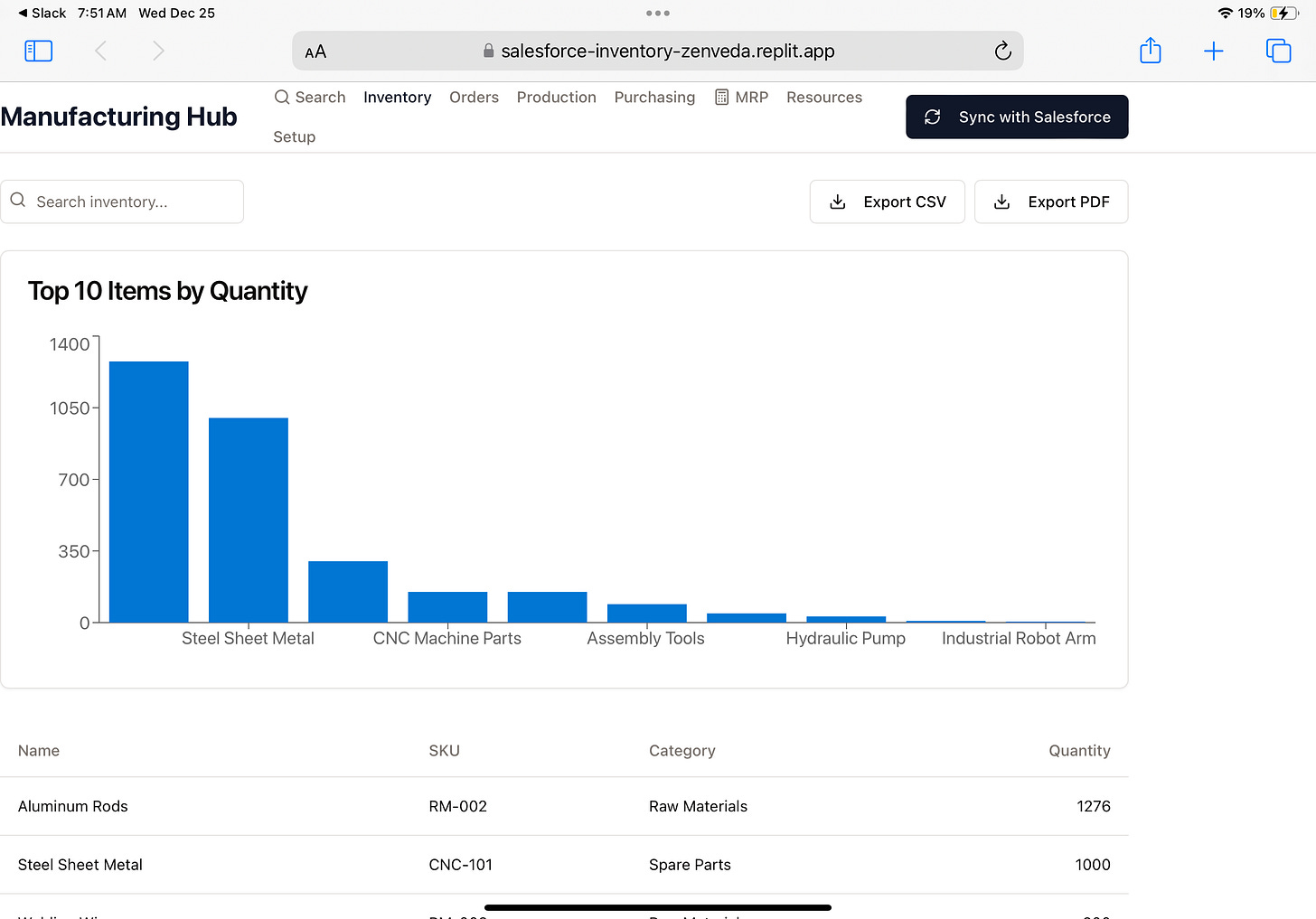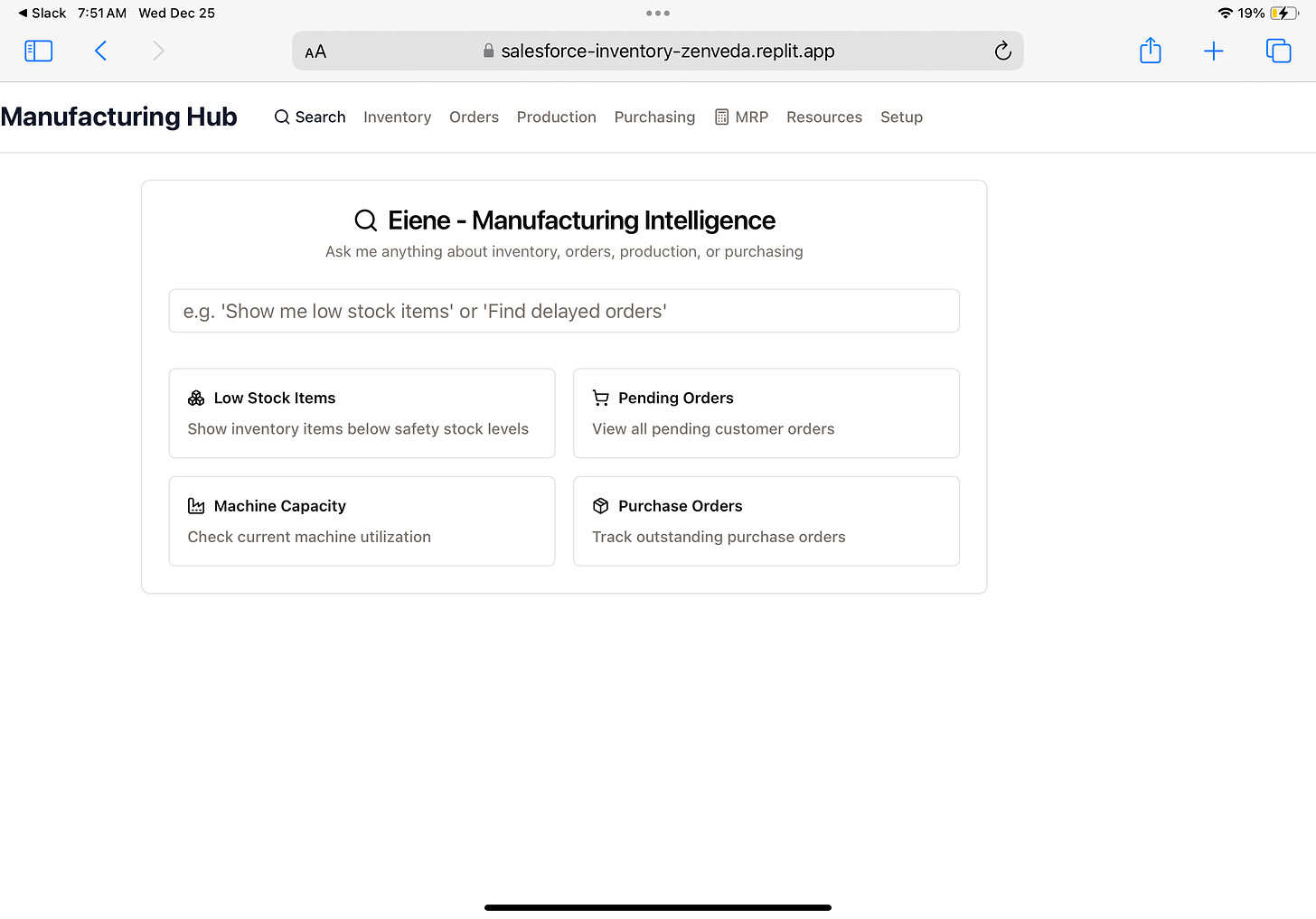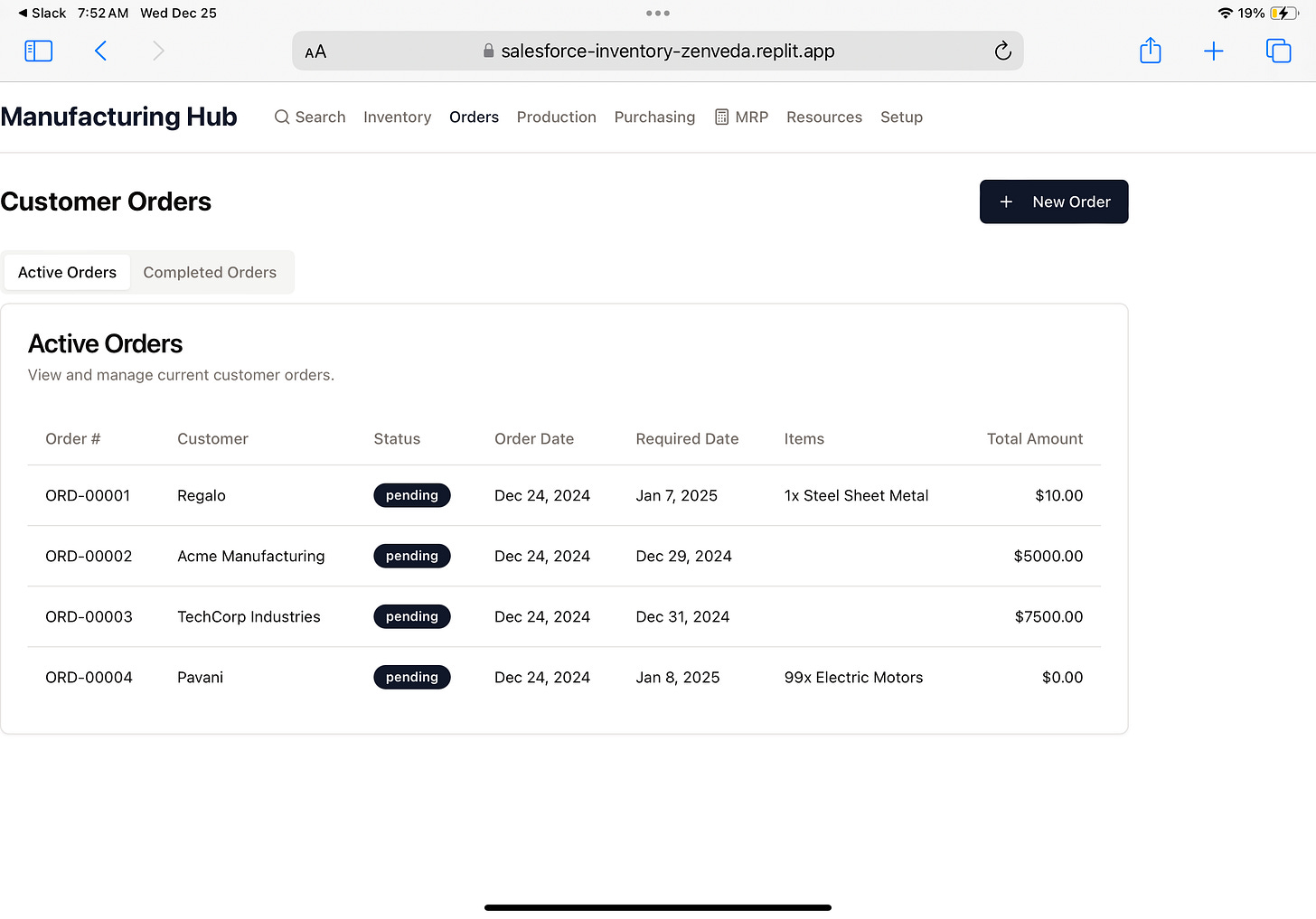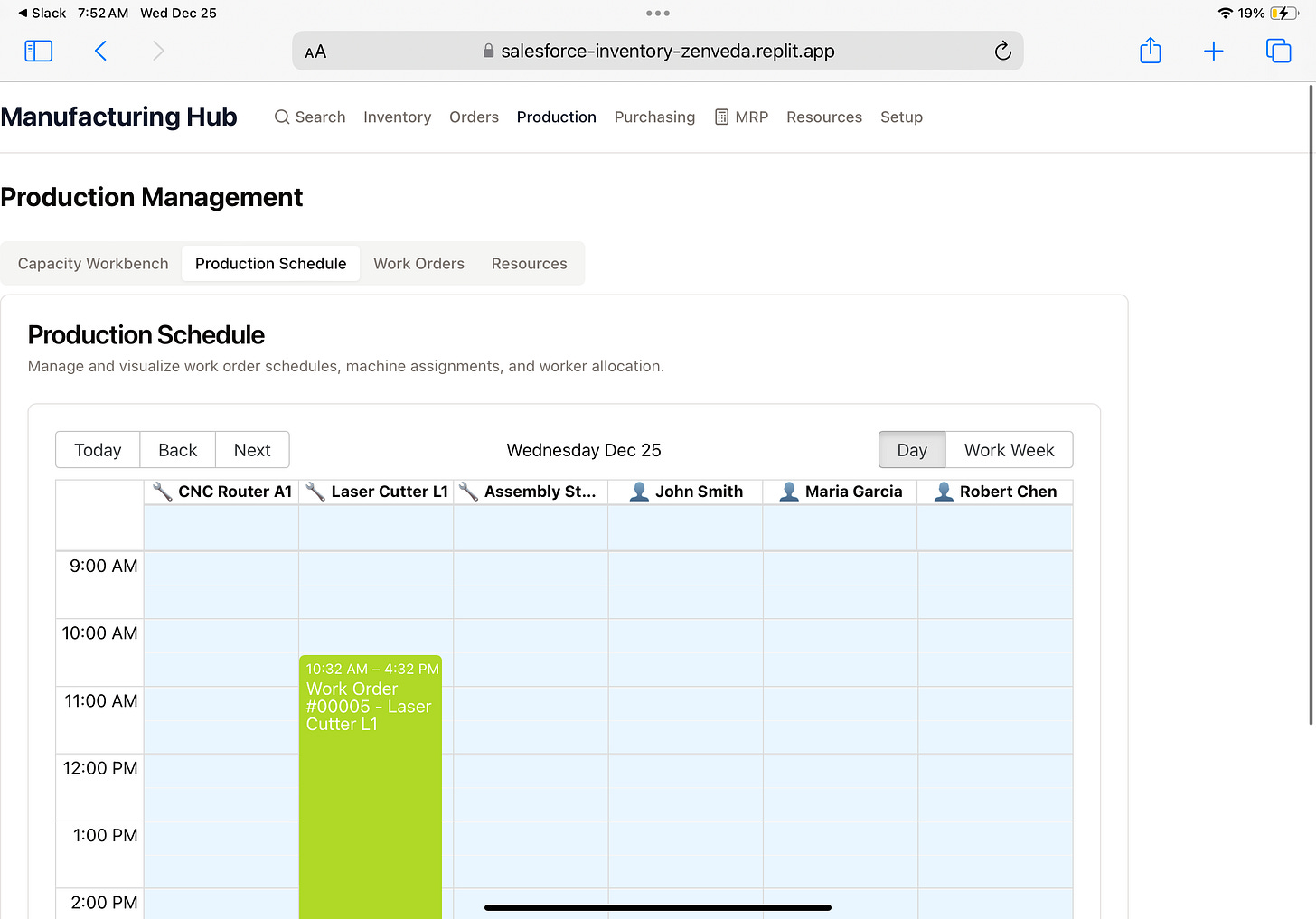I built an ERP in 2 hours with AI
A Practical Journey from Concept to Prototype in 2 Hours using Replit Agents
The traditional ERP playbook is gathering dust. Yesterday, I did something that would have seemed impossible just months ago: built a functioning manufacturing ERP system in two hours by talking to, er… prompting a Replit Agent. Not a basic CRUD app, but a system with inventory management, procurement, production planning, MRP, and even an intelligence layer.
But this isn't a story about replacing traditional ERPs. It's about how AI is revolutionizing the way we approach enterprise software development.
Working with AI: The 10X Developer Experience
Remember the concept of a 10X developer - those rare individuals who understand business context, grasp implicit requirements, and deliver solutions rapidly? That's what working with AI feels like. When I prompted it to "design an MRP engine," it didn't just create basic CRUD operations. It understood the need for BOM explosion, lead time offsetting, and capacity checking - all without explicit specifications.
The experience was less like programming and more like having a senior architect who codes. One who has read every manufacturing best practice guide and remembers every detail.
Breaking Speed Barriers: What Worked
The speed of iteration was stunning. Traditional ERP implementations spend months in requirements gathering. Here's what we accomplished in hours:
- Inventory Management: Complete with location tracking and lot/serial control
- Procurement System: PO generation and vendor management
- Production Planning: Work orders and capacity planning
- MRP Engine: Full material requirements planning
- Intelligence Layer: AI-driven optimization and predictions
The most surprising aspect? The AI's grasp of implicit requirements. It's like having a developer who spent years in manufacturing. When building the procurement module, it automatically included vendor performance tracking - something that would typically come up only after multiple requirement sessions.
The Reality Check: What You Need to Know
Let's be clear about the limitations. This isn't production-ready code, and that's okay. Here's what you should know:
1. Database Design Needs Work
- The schema isn't optimized for high-volume transactions
- Some relationships need normalization
- Indexing strategy requires refinement
2. Performance at Scale
- The UI works smoothly for demos
- High-volume environments would need significant optimization
- Concurrent user handling needs work
3. Code Quality Considerations
- Some redundant module creation
- Stub code that needs cleanup
- Integration points need hardening
The Secret Sauce: AI Debugging AI
One of the most fascinating discoveries was using AI to fix its own shortcomings. When facing issues, I'd prompt the AI to:
- Review its own code
- Identify potential problems
- Suggest and implement fixes
This created a fascinating feedback loop - like having a built-in QA engineer who could both spot and fix issues.
Real-World Implications
This experiment reveals three crucial insights for enterprise software development:
1. Rapid Prototyping is Real
- What used to take months can now be prototyped in hours
- Requirements validation becomes practical and iterative
- Stakeholders can see working software instead of diagrams
2. The Role of Developers is Evolving
- From writing every line of code to system architecture and optimization
- Focus shifts to business logic and edge cases
- More time for innovation, less for boilerplate
3. The Future of Enterprise Software
- Faster iteration cycles
- More focus on business value
- Lower barrier to entry for custom solutions
What This Means for Manufacturing Tech Leaders
This isn't about replacing your existing ERP. It's about:
- Rapid prototyping and validation
- Quick proof-of-concepts for new features
- Testing ideas before major investments
- Accelerating digital transformation initiatives
Looking Ahead
We're entering an era where the bottleneck in enterprise software isn't technical implementation - it's business process validation. This shift has profound implications for how we approach:
- Software development
- Business process design
- Team structure and skills
- Project timelines and budgets
The Take-Home Message
The future isn't AI replacing developers or existing ERPs. It's about AI amplifying human capabilities, allowing us to focus on what truly matters - solving business problems and creating value.
The two-hour ERP isn't meant for production deployment. It's a window into a future where we can fail fast, iterate quickly, and innovate boldly. The question isn't whether to embrace this approach, but how to integrate it into your existing development and business processes.






